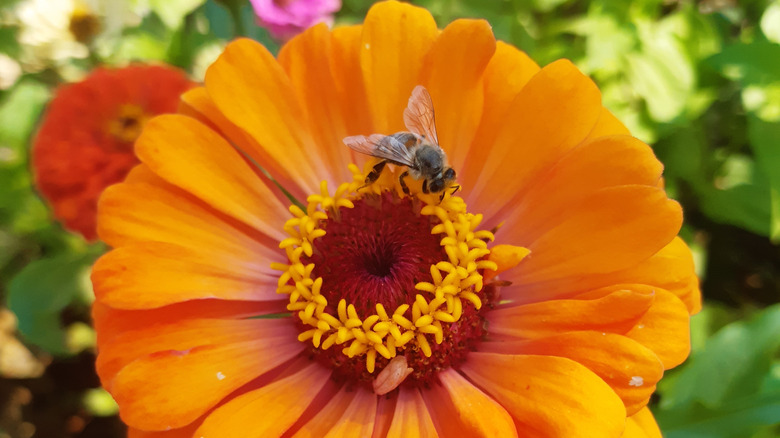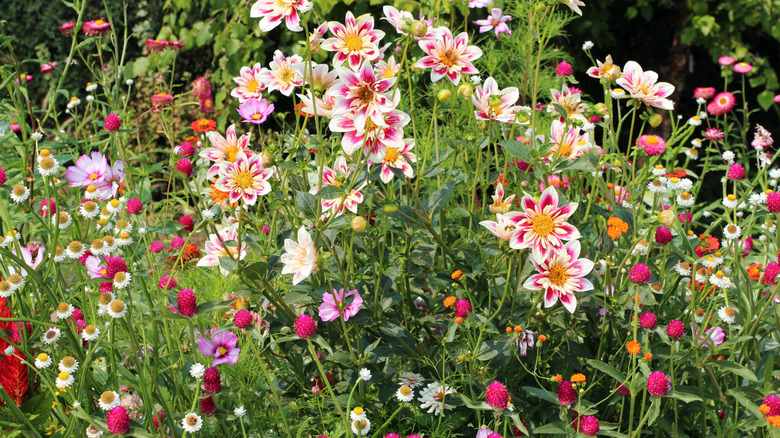Attract More Pollinators With The Companion Flower Zinnias Love
There's nothing quite as pleasing as taking the time to watch a bee buzz from flower to flower collecting nectar and spreading pollen as it goes. This is one of the most rewarding sights if you're also growing vegetables and fruits among your pretty flowers because, instead of having to hand pollinate, the bees and other pollinators are busy doing the work for you. One of the most outstanding flowers you're probably already growing is the beautiful zinnia, but don't stop there! Why not pair it with another garden favorite which pollinators absolutely love: the brilliant cosmos. Planted side by side, these two flowering plants will complement each other, and this pairing is an excellent way to bring more pollinators into your yard and garden.
So, what makes this combination so advantageous, apart from attracting bees and butterflies, that is? Both zinnias and cosmos are hardy annuals that are easy to grow and will thrive in a sunny spot in your yard. Both also come in a wide variety of floral colors so you can mix and match them to your heart's content. In fact, you might like to unleash your inner Monet and create a stunning flower garden worthy of a masterpiece.
Zinnias and cosmos go together like fine wine and cheese
With some good planning, you can easily choose zinnia and cosmos varieties that grow to similar heights. This will create a beautiful meadow garden where all the blooms blend together for a delightful feast of color in summer. This gorgeous mix of complementing blooms is one reason why cosmos is one of those flowers you should be growing near zinnias in the garden. As an example, you might like to select seeds of Cosmos 'Xanthos,' which is a pretty open flower in a soft buttery yellow, and mix it with zinnias from the Zahara series in stunning colors of orange, white, deep red, or salmon. The cosmos hybrid will reach a height of 18 to 26 inches, while the zinnias in the Zahara series will attain heights from 16 to 20 inches.
Another reason these two bloomers go so well together is that they can tolerate poor soil and are drought-tolerant. Best of all, these two companions are also perfect for cut flowers, so your dream of heading out into the garden in the morning and cutting an armful to bring indoors can become a reality. You'll just need to know a few tricks on how to keep your cut flowers fresh longer. Just one final word of caution. A popular species of garden cosmos (Cosmos bipinnatus) is considered invasive in West Virginia, so if you live in this state, make sure to choose seeds from a different species.

